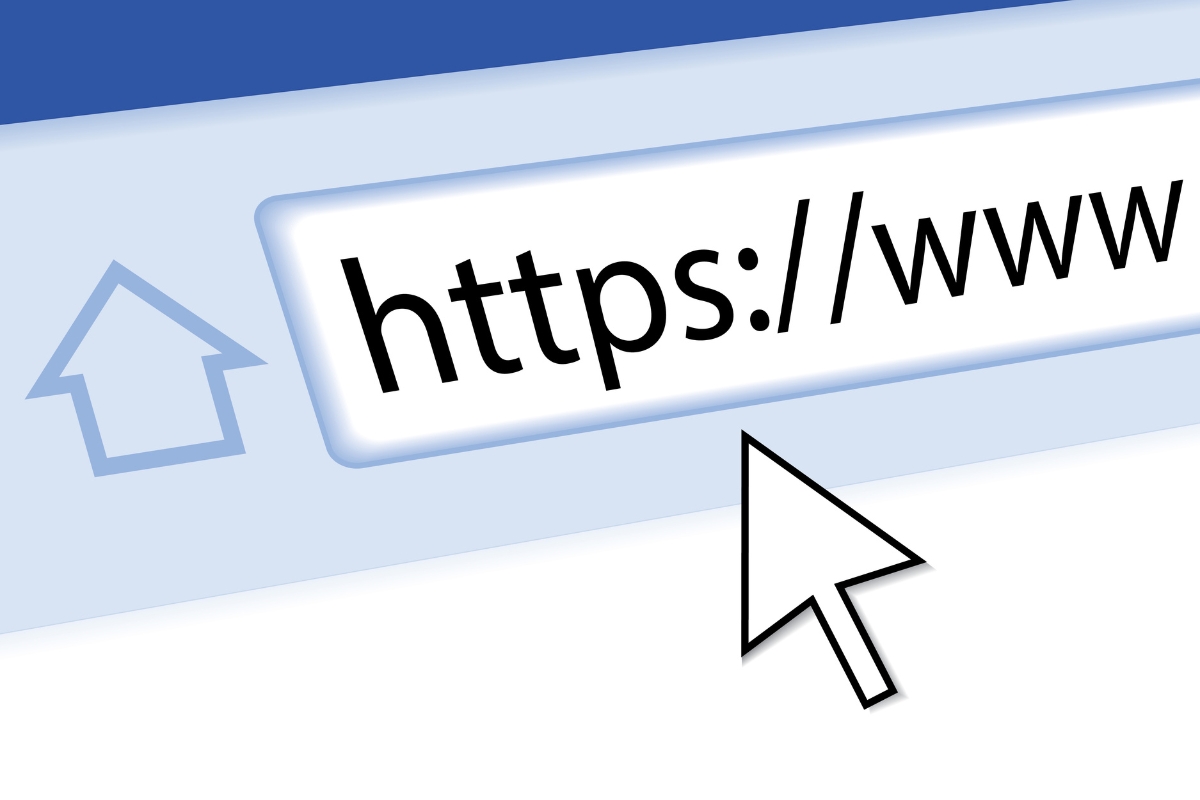In the ever-evolving landscape of the digital realm, websites have become the virtual storefronts of the modern age, offering an unparalleled platform for individuals and businesses to showcase their identity, products, and services to a global audience.
But beyond its aesthetic appeal and functional design, what is the purpose of a website? As we delve into the intricate web of cyberspace, we uncover a myriad of possibilities that extend far beyond mere online presence.
In this blog post, we embark on a journey to unravel the multifaceted layers of website success, exploring how these virtual domains serve as catalysts for growth, engagement, and innovation in the vast expanse of the World Wide Web. Join us as we uncover the true essence of what the purpose of a website is, and redefine the benchmarks of digital triumph in this ever-evolving ecosystem.
What Is the Purpose of a Website: Unlocking the Key to Online Success
Establishing Online Presence: The Foundation of a Website’s Purpose

In the vast digital landscape, establishing an online presence is the first step towards defining the purpose of a website. It serves as the foundation upon which all other aspects of a website’s success are built. An online presence allows individuals and businesses to showcase their brand, products, or services to a global audience.
With the increasing reliance on search engines to find information, having a strong online presence is crucial for visibility and reach. When someone searches for relevant keywords or phrases related to your website, you want your website to appear in the search results.
This is where search engine optimization (SEO) comes into play. By optimizing your website’s content and structure, you can improve its visibility in search engine rankings and attract more organic traffic.
Additionally, having an online presence enables you to connect with your target audience on various digital platforms such as social media networks, forums, and industry-specific websites. By engaging with your audience through these channels, you can build brand awareness, establish credibility, and foster relationships that can lead to long-term customer loyalty.
Navigating User Experience: Enhancing Accessibility and Engagement

Once you have established an online presence, the next step in defining the purpose of a website is navigating user experience. User experience (UX) refers to how users interact with your website and how easily they can find what they are looking for.
An effective UX design focuses on enhancing accessibility and engagement. This means ensuring that your website is easy to navigate, loads quickly across different devices and browsers, and provides valuable content that meets the needs of your target audience.
To enhance accessibility, consider implementing features such as clear navigation menus, intuitive user interfaces, descriptive alt tags for images (to assist visually impaired users), and responsive design that adapts to different screen sizes. These features make it easier for users to navigate your website and find the information they need.
Engagement, on the other hand, involves creating compelling and interactive content that keeps users hooked. This can include incorporating multimedia elements such as videos, infographics, and interactive quizzes or surveys. By providing valuable and engaging content, you can encourage users to spend more time on your website, explore different pages, and ultimately take desired actions such as making a purchase or subscribing to a newsletter.
Content is King: Crafting Compelling Narratives and Information

In the digital realm, content is king. It is the driving force behind attracting and retaining visitors to your website. Compelling narratives and informative content not only captivate your audience but also establish your authority in your niche.
When crafting content for your website, it’s important to understand your target audience’s needs and preferences. Conduct thorough research to identify their pain points, interests, and questions they may have related to your industry or niche. This will help you create content that resonates with them and provides valuable solutions or insights.
Consider using a mix of different types of content such as blog posts, articles, case studies, whitepapers, videos, podcasts, or webinars. This variety allows you to cater to different learning styles and preferences of your audience.
In addition to creating compelling narratives, optimizing your content for search engines is crucial for improving its visibility online. Incorporate relevant keywords naturally throughout your content while ensuring it remains informative and engaging.
Driving Traffic: Strategies for Visibility and Reach

A successful website not only establishes an online presence but also drives consistent traffic. Without traffic (visitors), even the most well-designed website will struggle to achieve its purpose.
To drive traffic to your website, you can employ various strategies such as search engine optimization (SEO), social media marketing, content marketing, email marketing, and paid advertising.
SEO involves optimizing your website’s content and structure to improve its visibility in search engine rankings. This includes conducting keyword research, optimizing meta tags and descriptions, building high-quality backlinks, and improving website loading speed.
Social media marketing allows you to leverage popular social media platforms to promote your website and engage with your target audience. By creating compelling content tailored for each platform and actively participating in relevant conversations or communities, you can attract followers who are interested in what you have to offer.
Content marketing involves creating valuable and informative content that attracts and engages your target audience. This can include blog posts, articles, infographics, videos, or podcasts. By consistently producing high-quality content that addresses the needs of your audience, you can establish yourself as a trusted source of information and drive traffic to your website.
Email marketing is another effective strategy for driving traffic. By building an email list of interested subscribers and sending them regular newsletters or updates about new content or offers on your website, you can drive repeat visits from engaged users.
Paid advertising allows you to reach a wider audience by promoting your website through platforms such as Google Ads or social media ads. This strategy can be particularly effective when combined with other organic traffic generation methods.
Conversion Rate Optimization: Transforming Visitors into Customers

Driving traffic to your website is only half the battle; the other half is converting those visitors into customers or achieving other desired actions such as newsletter sign-ups or contact form submissions. This is where conversion rate optimization (CRO) comes into play.
CRO involves analyzing user behavior on your website and making data-driven changes to improve conversion rates. This can include optimizing landing pages, improving website loading speed, simplifying the checkout process, adding trust signals such as customer testimonials or security badges, and implementing persuasive call-to-action buttons.
By continuously testing and refining different elements of your website’s design and user experience, you can increase the likelihood of visitors taking desired actions and ultimately achieving your website’s purpose.
Measuring Success: Metrics and Analytics in Website Performance

Measuring success in the online realm involves diving into the realm of metrics and analytics to gauge website performance accurately. Understanding the purpose of a website is crucial for defining success in the digital landscape.
- Key Performance Indicators (KPIs) play a vital role in measuring a website’s success. KPIs, such as conversion rates, bounce rates, and page views, provide valuable insights into user behavior and engagement levels.
- User Engagement Metrics help in assessing how visitors interact with the website. Metrics like time spent on page, click-through rates, and social shares indicate the level of user interest and satisfaction.
- Conversion Metrics are essential for determining how effectively a website is fulfilling its objectives. Tracking metrics such as conversion rates, lead generation, and sales revenue provides a clear picture of the website’s conversion effectiveness.
- SEO Metrics are crucial for evaluating a website’s visibility and ranking on search engine results pages. Metrics like organic traffic, keyword rankings, and backlink profiles are key indicators of SEO performance.
- Performance Analytics focus on the technical aspects of a website, including page load speed, server response time, and overall website performance. Optimizing these metrics enhances user experience and helps in improving search engine rankings.
Adaptability and Innovation: Staying Ahead in the Digital Landscape

In today’s fast-paced digital landscape, adaptability and innovation are key factors for staying ahead of the curve. When it comes to websites, understanding the purpose behind them is crucial for defining success in the World Wide Web.
Websites serve various purposes, depending on the goals of the individual or organization behind them. From e-commerce platforms to informational websites, each serves a unique function in the online space. Understanding “what is the purpose of a website” is the first step towards creating a successful online presence.
In the ever-evolving digital world, adaptability is essential. Websites need to constantly evolve to meet the changing needs of users and keep up with the latest trends and technologies. By staying adaptable, website owners can ensure that their online presence remains relevant and effective.
Moreover, innovation plays a significant role in setting a website apart from the competition. By embracing new ideas, technologies, Google trends, and design innovations, website owners can create a unique and engaging online experience for their visitors. Innovation allows websites to stand out in a crowded digital landscape and attract and retain users effectively.
Building Trust and Credibility: Establishing Authority and Reputation

When it comes to building trust and credibility online, establishing authority and a positive online reputation is key. One of the fundamental aspects to consider is understanding the purpose of a website. What is the purpose of a website? It goes beyond just having an online presence; it’s about defining success in the vast World Wide Web.
A website serves as a digital storefront for businesses, organizations, and individuals alike. It is a platform where information is shared, products are showcased, and services are offered. Understanding the primary goal of a website is crucial for achieving success in the online realm.
By clearly defining the purpose of a website, you can effectively communicate your message to your target audience. Whether it’s to drive sales, generate leads, or build brand awareness, having a clear purpose guides your content creation and design decisions.
Moreover, a well-defined purpose helps in establishing authority within your niche. When visitors land on your website and find valuable information that aligns with their needs, they are more likely to trust your expertise and credibility. This trust forms the foundation for building long-term relationships with your audience.
In the competitive landscape of the digital world, credibility is earned through consistency, transparency, and authenticity. By delivering on your website’s purpose and providing value to your visitors, you solidify your reputation as a trusted source of information.
Community Engagement: Fostering Connections and Interaction

In the digital landscape, community engagement plays a pivotal role in fostering connections and interaction. When exploring the purpose of a website, it becomes evident that creating a platform for meaningful engagement is essential for success in the World Wide Web.
Community engagement on a website goes beyond mere visits and clicks. It involves building relationships with visitors, encouraging discussions, and creating a sense of belonging. By prioritizing community engagement, websites can establish a loyal user base that actively participates and interacts with the content.
One of the key benefits of community engagement is the opportunity to receive feedback and insights directly from the audience. By listening to their opinions and suggestions, website owners can tailor their content and offerings to better meet the needs and expectations of their community.
Moreover, fostering connections through community engagement can lead to increased brand loyalty and advocacy. When users feel connected to a website and its community, they are more likely to return frequently, share content with others, and promote the website through word-of-mouth.
Interaction is another crucial aspect of community engagement. By providing interactive features such as forums, comment sections, live chats, and social media integration, websites can create an immersive experience that encourages users to actively participate and engage with the content.
Conclusion: Redefining Success in the World Wide Web
In conclusion, the purpose of a website extends far beyond mere online presence. It is about creating a virtual space that not only attracts visitors but also engages them, provides value, builds trust, fosters connections, and ultimately achieves its intended goals.
Don’t settle for mediocrity – reach out to Newman Web Solutions today and let us help you thrive in the digital world. Our website design and digital marketing services are designed to help your business stand out online. Contact Newman Web Solutions at (404) 301-9189 or schedule a 30-minute free marketing strategy session and discover how we can help you achieve your website’s full potential.





